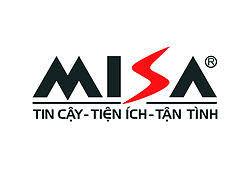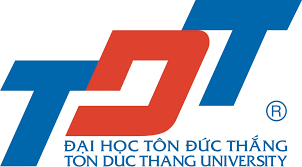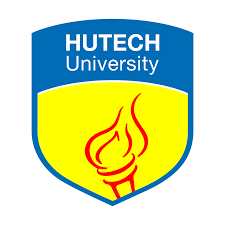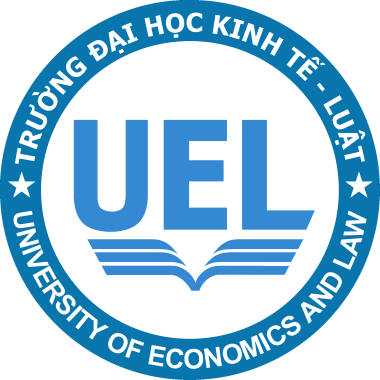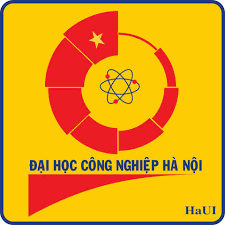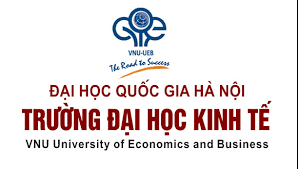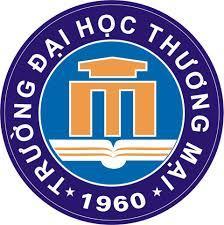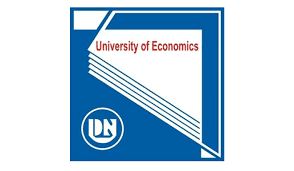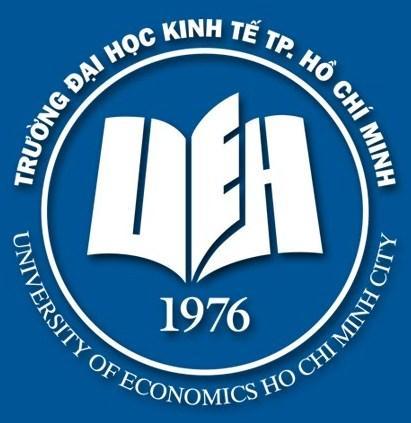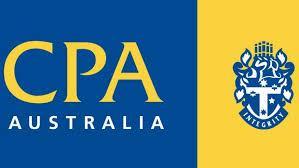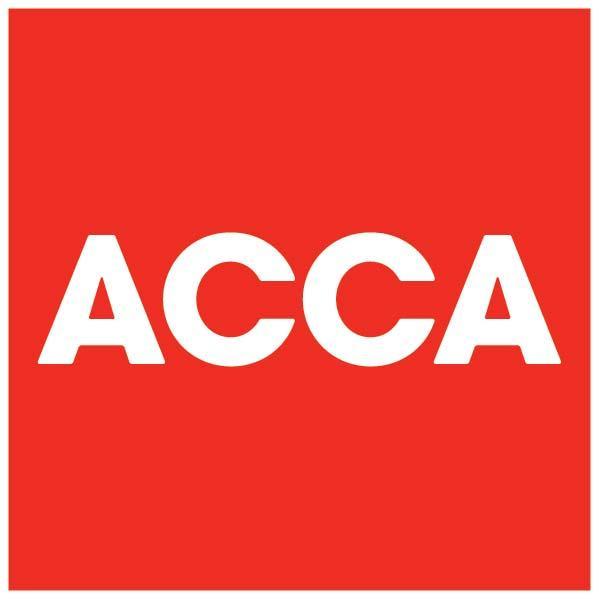EARNINGS MANAGEMENT AND NEW LISTINGS: EVIDENCE FROM VIETNAM
- 05-03-22
- NCKH Giảng viên
Anh Huu Nguyenand Chi Thi Duong*School of Accounting and Auditing, National Economics University, Vietnam*Corresponding author: duongchi@neu.edu.vnAnh Huu Nguyenand Chi Thi Duong*School of Accounting and Auditing, National Economics University, Vietnam
*Corresponding author: duongchi@neu.edu.vn
*Corresponding author: duongchi@neu.edu.vn
ABSTRACT
Earnings management around corporate events has been widely discussed in literature review which has shown mixed results. Furthermore, prior studies have extensively focused on earnings management around initial public offerings (IPOs) and seasoned equity offerings (SEOs), while less attention has been given to the listing event. Another motivation comes from the context of the undeveloped market. While earnings management has been widely discussed in developed countries, it is still limited in emerging countries in general and in Vietnam in particular, due to the lack of research on this phenomenon and the unique institutional feature and pre-listing profit requirement in Vietnam’s stock market. This research is conducted to investigate the earnings management behaviour around listing event in Vietnam. The sample of this study consists of financial data from 189 newly listed companies on the Ho Chi Minh City Stock Exchange (HOSE) for the period of 2009–2017. Four cross-sectional models were used to estimate earnings management, including two total accruals-based models and two current accruals-based models. This research makes important contributions to the body of literature on Vietnam’s stock market. First, this study provides empirical evidence suggesting a greater positive earnings management practice of newly listed firms in current accrual models than those in total accrual models. Second, the results from both parametric and non-parametric test statistics show that HOSE-listed firms present higher levels of earnings management in the year prior to the listing than those in post-listing year and two subsequent years after listing. Finally, new listing requirements in 2012 require the company’s return on equity (ROE) in the most recent year to be at least 5%. However, the paper finds no evidence to suggest that relative to all newly listed firms after the new profit requirement exhibit greater positive earnings management than that of firms listed before the change in pre-listing year.
Keywords: accounting accruals, earnings management, Ho Chi Minh City Stock Exchange, listing requirements, new listings
INTRODUCTION
Accounting principles allow managers to exercise considerable discretion over accruals, which creates flexibility in terms of exercising certain amount of judgement in preparing financial statements through choices of accounting and reporting methods, especially in new issuance events, which is known as a rich information asymmetry context. This behaviour is consistent with the earnings management definition suggested by Healy and Wahlen (1999, p. 368) as “managers use judgment in the financial reporting and in structuring transactions to alter financial reports to either mislead some stakeholders about the underlying economic performance of the company, or to influence contractual outcomes that depend on reported accounting numbers.” Some studies have determined three events in which firms have incentives and possibilities to manipulate earnings before issuing shares via initial public offerings (IPOs), seasoned equity offerings (SEOs), or new listings. Several international studies have documented the existence of earnings management surrounding new issuance. Results of these studies illustrate the contrast among levels of accruals earnings management ranging from very aggressive (such as Aharony et al., 1993; DuCharme et al., 2004; Friedlan, 1994; Kao et al., 2009; Nuryaman, 2013; Rangan, 1998; Shivakumar, 2000; Teoh et al., 1998a, 1998b) to no earnings management (such as Armstrong et al., 2008; Ball & Shivakumar, 2008; DuCharme et al., 2001; Premti, 2013) to no earnings management (such as DuCharme et al., 2001; Ball & Shivakumar, 2008; Armstrong et al., 2008; Premti, 2013). Review of the earnings management around issuance of equity and new listings indicates that while earnings management during issuance of equity is fully documented, the study on accruals earnings management and new listings is not strong enough. While IPOs and SEOs are the types of equity issuance in which the shares of a firm are sold to investors with the main objective to raise capital, listing refers to an entrance of firms into a stock exchange and the transformation to publicly owned entities. Listing offers advantages to firms such as raising further capital, improving their reflectivity and reputation, having higher collateral value of the securities, and achieving better corporate practice and better liquidity of marketable securities. Firms must meet all the listing requirementsset out by the governing bodies to be listed on the stock
in (year +1) and DA(CFO) in (year –1). Therefore, there is limited evidence to conclude that firms listed on HOSE present positive earnings management in the year before listing event, when models based on total accruals are adopted.Table 2 shows the results used to test the first hypothesis, H1. H1 is supported as firms listed on HOSE exhibit a high magnitude of positive earnings management in pre-listing year when using current accruals models. However, models based on total accruals provide mixed results. Hence, greater reliance depends on the results of the current accruals models, which support H1.
Table 2
Descriptive statistics for the DA and DCA
MeanMedianMinMaxSDPanel A: Modified Jones model DA year –10.0146 0.0233 (0.9179)1.1010 0.2443 DA year 0(0.0166)(0.0025)(1.3507)0.9412 0.2389 DA year +10.00240.0234**(1.54)1.170.2445DA year +2(0.0053)(0.0020)(0.81)0.320.1331Panel B: Currents accruals model DCA year –10.0726***0.0452***(0.5189)1.0788 0.2349 DCA year 00.0146 0.0049 (0.5196)0.8820 0.1936 DCA year +10.01060.020(1.29)0.800.2314DCA year +2(0.0067)0.0011(0.56)0.360.1437Panel C: Cash flow model based on total accruals DA(CF0) year –10.01710.0303***(0.9744)0.5075 0.1884 DA(CF0) year 0 0.0002 0.0223 (1.3498)0.4915 0.1911 DA(CFO) year +1(0.0029)0.0129(1.95)1.30 0.2591DA(CFO) year +20.00430.0028(0.78)1.32 0.1680Panel D: Cash flow model based on current accruals DCA(CF0) year –1 0.0815***0.0631***(0.9532)1.0987 0.2409 DCA(CF0) year 00.0245 0.0169**(0.9363)0.6103 0.2063 DCA(CF0) year +10.01130.006(1.54)1.140.2437DCA(CF0) year +20.00450.011(0.69)1.430.1887Notes: ***, **, and * represent significance levels at 1%, 5%, and 10%Year –1 is considered as a year-end before the listing date. Year 0 refers as fiscal year ending after listing. Year +1 and Year +2 refer to the first and second post-listing financial statements issued after listing.
Earnings management and new listings41
In summary, the research provides some empirical evidence for existence of earning management before listing on HOSE. Firms listed on HOSE show significantly greater positive earnings management in current accrual models than in total accrual ones. The first interpretation is that in order to be listed on HOSE, firms use current discretionary accruals to inflate their earnings in pre-listing year to meet profit requirements. Moreover, managers prefer to use discretion over current accruals, because it is known as “the component most easily subjected to successful managerial manipulation” (Teoh et al., 1998b, p. 64). In addition, current accruals are likely to be more flexible and important than non-current accruals in improving earnings since current accruals have higher degree of judgment with regard to its estimation (Dechow, 1994). Non-current accruals such as depreciation and change in deferred taxes are more visible than current accruals and need more time to change before listing. Therefore, consistent with previous studies, managers of HOSE firms favour adjusting current accruals in an attempt to improve earnings in the year before listing, which cannot be sustained in post-listing years.Testing the Earnings Management in the Pre-Listing Year and Post-Listing YearsThe result above indicates that earnings management in year –1 is greater than year 0 and two consecutive years after listing. In order to investigate the significance of the differences, the research uses t-statistics from t-tests and Wilcoxon tests to determine if earnings management in year –1 is statistically higher than in year 0 and subsequent years in which the former tests the differences in means of earnings management and the latter tests the differences in medians of earnings management. The result of matched-paired t-test in Table 3 shows that the means of DCA [DCA(CFO)] are statistically significantly higher in year –1 than in year 0 and subsequent years at 5% and 1% level, respectively. In contrast, the means of DA (measured by two total accruals models) are lower in year 0 and two subsequent years after listing than in year –1, but the difference is not significant for both models. Hence, listing firms in HOSE exhibit significantly higher positive discretionary current accruals in year –1 than in year 0 and two consecutive years immediately after listing for two current accruals models, which support H2. Current accruals model can detect a significant and positive level of earnings management in the year preceding the listing.
Table 3
Comparison between year –1 and year 0, year +1, year +2 in earnings management based on matched pairs t-testModel testTesting periodt-valuep-value A. Models based on total accruals1. Modified Jones model (DA)Year –1 and Year 01.29400.1973Year –1 and Year +10.53120.5959Year –1 and Year +20.98760.32462. Cashflow [DA(CFO)]Year –1 and Year 01.0690.2864Year –1 and Year +10.89450.3722Year –1 and Year +20.76660.4443B. Model based on current accruals 1. Current accruals (DCA)Year –1 and Year 02.44290.0155Year –1 and Year +12.54010.0119Year –1 and Year +23.79860.00022. Cashflow [DCA(CFO)]Year –1 and Year 02.42540.0162Year –1 and Year +12.55520.0114Year –1 and Year +23.42430.0008In Table 4, positive signed ranks mean that the medians of DA [DA(CFO)] and DCA [DCA(CFO)] variables are greater in year –1 than those in year 0, year +1, and year +2. The opposite is true in negative ranks. In general, there are fewer negative ranks than positive ranks in all models. It can be observed from Panel B that the significant differences between the medians are at conventional levels in both current accruals models with greater positive DCA in the year –1 than that in the year 0 and two subsequent years after listing. By comparison, models based on total accruals show that median DA in year –1 are significantly greater than median in year 0 for the Jones model at 10% level, as shown in Panel A. However, the reduction in the median DA from the year –1 to the year +1 and year +2 is not significant. Contrary to results found in modified Jones model, DA(CFO) from the cashflow model indicates a statistically significant difference among year –1 and two consecutive years immediately after listing at 10% level, but the difference is not significant between year –1 and year 0.On the other hand, medians of DA derived from models based on total accruals show a significant difference in some years as compared to the pre-listing year, but the opposite result is found from the means of discretionary accruals. Hence, there was insufficient evidence to prove that earnings management (measured by total
Earnings management and new listings43accruals) are significantly higher in the pre-listing year as compared to that in the listing year and two consecutive years immediately after listing.
Table 4Comparison between year –1 and year 0, year +1, year +2 in earnings management based on Wilcoxon signed-rank testModel testTesting periodPositive rankNegative rankp-valuez-scoreA. Model based on total accruals 1. Modified Jones model (DA)Year –1 and Year 0108810.05851.8920Year –1 and Year +194950.62080.495Year –1 and Year +2107820.10711.61102. Cashflow DA (CFO)Year –1 and Year 0105840.1929 1.3020Year –1 and Year +1107820.06181.868Year –1 and Year +2103860.09871.651B. Model based on current accruals1. Current accruals (DCA)Year –1 and Year 0106830.03292.1330Year –1 and Year +1101880.0981.658Year –1 and Year +2107820.00522.7972. Cashflow DCA (CFO)Year –1 and Year 0105840.02062.3150Year –1 and Year +1106830.02322.27 Year –1 and Year +2107820.00143.193
In summary, the results from t-test reported in Table 3 are consistent with the results from Wilcoxon signed-rank test presented in Table 4 for all current accruals models. When models based on current accruals are considered, the findings suggest that HOSE-listed firms show significantly greater positive earnings management in the year before listing than in post-listing years, including two consecutive years immediately after listing, which validates H2. However, the evidence related to H2 is mixed when using models based on total accruals.Overall, consistent with previous studies and agency theory, the results obtained from testing H1 and H2 suggest that in an attempt to meet the pre-listing profit requirement, the firms listed on HOSE may have incentives to inflate their earnings in the listing year through the current accruals. However, the high level of current accruals cannot be sustained in post-listing years.As discussed in previous sections, there was no pre-listing profit requirement (ROE) before 15 September 2012. Then, a new requirement for ROE in the latest year to be at least 5% has been added in the new decree. H3 states that firms listed on HOSE after 15 September 2012 might have stronger incentives to manipulate their earnings upward in year –1 than firms listed before 15 September 2012.Testing the Pre-Listing Earnings Management and the Change in Profit RequirementThe sample of 189 firms is separated into two groups. Group 1 consists of 115 firms listed before the new profit requirement (before 15 September 2012), the rest of 74 firms listed after the new profit requirement (after 15 September 2012) is in Group 2.Three tests are undertaken to test H3. First, two-sample t-test is performed to investigate whether the differences in the means of discretionary accruals and discretionary current accruals of two groups are significant. Second, the statistical significance of the difference in medians of the two groups is tested with median test. In addition, in order to investigate whether Group 2 presents more significantly the level of discretionary accruals and the level of discretionary current accruals in the year preceding the listing than Group 1, the Mann-Whitney U-test is undertaken. Table 5 indicates that the means of accruals based on all models are greater in Group 2 than those in Group 1. However, the differences are not significant. Similarly, there is no statistically significant difference between two groups. Therefore, the test results do not support H3, which implies that the change in profit requirement (ROE at least 5%) is not related to a significant increase in earnings management.
Table 5
Comparisons of earnings management between Group 1 and Group 2 in year t−1 Model testTwo-sample t-test Median test Mann-Whitney U-testGroup 1DA(DCA) mean Group 2DA(DCA) meanp-value Group 1 DA(DCA) median Group 2DA(DCA) median p-value p-valueModels based on total accruals1. Modified Jones model0.0117 0.01900.8420 0.03150.0130 0.325 0.86592. Cashflow0.0089 0.02970.4597 0.03190.0211 0.697 0.8232Models based on current accruals 1. Current accruals0.0682 0.07950.7468 0.04820.0449 0.928 0.51322. Cashflow0.0785 0.08620.8302 0.06500.0570 0.928 0.6085
Earnings management and new listings
In an effort to enhance the quality of listed firms, regulators have imposed stricter listing requirement by increasing capital requirement and introduced new profit requirement (ROE) after 15 September 2012. As opposed to tighter regulations, the institutional setting of the Vietnam market provides evidence that both groups have the same incentives to manipulate their earnings upward in pre-listing year to its maximum level. Newly listed companies use current accruals to inflate earnings of pre-listing year in order to be eligible for listing on the HOSE without the impact of new regulations.
CONCLUSION
Literature review presents several motivations for earnings management practices around the event of share issuance and new listings. Attention is given to issuers on
HOSE due to their inflation of earnings around new listing events. The empirical approach uses discretionary accruals to measure earnings management. Four cross-sectional models, including two total accruals models and two current accruals models, are necessary for computing the discretionary accruals proxies. The initial results provide empirical evidence for three hypotheses that firms tend to increase their earnings before listing. Based on estimates from four models using both total accruals and current accruals, parametric and non-parametric tests are used to examine the validity of three hypotheses. The research provides evidence to support the existence of earnings management in pre-listing year with significantly greater positive earnings management in current accrual models. However, when using models based on total accruals, there is insufficient evidence for the existence of the earnings management before listing. Besides, the empirical findings suggest that the accruals means and accruals medians are significantly higher in pre-listing year than those in post-listing years only when two models of current accruals are considered. Overall, given the conflicting results in previous studies, the study provides further evidence for ongoing debate on the existence of earnings management phenomenon. The findings are in line with literature review which suggest that HOSE-listed firms can use current discretionary accruals to deliberately manipulate earnings in an attempt to meet profit requirements for listing. These firms then show a falling trend of earnings management in post-listing years. The findings agree with the views expressed by Teoh et al. (1998a, 1998b), Dechow and Dichev (2002), and Eiman (2013) in explaining the use of current discretionary accruals. According to Teoh et al. (1998b), current accruals are most easily subjected to manipulation by managers. In addition, current accruals are likely to be more flexible and important than long-term accruals in improving
earnings. Current accruals which occur frequently have higher degree of subjective judgment with regard to its estimation (Dechow & Dichev, 2002; Teoh et al., 1998b).Since 15 September 2012, HOSE has imposed new profit requirements for all new listings. By dividing sample firms into two groups, in which Group 1 consisting of firms listed before 15 September 2012 and Group 2 consisting of firms listed after that time, the results indicate that Group 1 and Group 2 are inflating their profits in pre-listing year similarly. The difference between the earnings management of two groups is not significant in pre-listing year. In other words, the institutional setting of HOSE also demonstrates that two groups have the same incentives to manipulate their earnings upward in listing year to meet the pre-listing profit requirement.Finally, the study suggests that managers of newly listed firms in Vietnam attempt to boost their earnings in the year preceding the listing by taking advantage of current accruals. However, positive level of earnings management is not sustained in post-listing years. Evidence from this study can help managers, auditors, market’s policy, and investors better understand the quality of financial reporting of newly listed firms.Despite the overall contribution, there are limitations in this study. First, this study is limited to the sample of listed firms in HOSE. Second, this study could only be generalised to similar market. In addition, the small sample is subjected to bias which stems from size limitation. Third, due to the lack of data in the years before listing, the period of research was limited to only one year prior to the listing. This may be an inadequate length of time for data analysis. Finally, there are some problems related to the technique of measuring earnings management. According to Fields et al. (2001), using only accrual-based earnings management method may not capture the entire level of earnings management behaviour. In order to address the limitation, a more comprehensive approach to investigating earnings management around listing by using varied earnings management techniques, such as real earnings management, would be a potential topic for future research.
ACKNOWLEDGEMENTS
This research is funded by the National Economics University, Hanoi, Vietnam.
Accounting principles allow managers to exercise considerable discretion over accruals, which creates flexibility in terms of exercising certain amount of judgement in preparing financial statements through choices of accounting and reporting methods, especially in new issuance events, which is known as a rich information asymmetry context. This behaviour is consistent with the earnings management definition suggested by Healy and Wahlen (1999, p. 368) as “managers use judgment in the financial reporting and in structuring transactions to alter financial reports to either mislead some stakeholders about the underlying economic performance of the company, or to influence contractual outcomes that depend on reported accounting numbers.” Some studies have determined three events in which firms have incentives and possibilities to manipulate earnings before issuing shares via initial public offerings (IPOs), seasoned equity offerings (SEOs), or new listings. Several international studies have documented the existence of earnings management surrounding new issuance. Results of these studies illustrate the contrast among levels of accruals earnings management ranging from very aggressive (such as Aharony et al., 1993; DuCharme et al., 2004; Friedlan, 1994; Kao et al., 2009; Nuryaman, 2013; Rangan, 1998; Shivakumar, 2000; Teoh et al., 1998a, 1998b) to no earnings management (such as Armstrong et al., 2008; Ball & Shivakumar, 2008; DuCharme et al., 2001; Premti, 2013) to no earnings management (such as DuCharme et al., 2001; Ball & Shivakumar, 2008; Armstrong et al., 2008; Premti, 2013). Review of the earnings management around issuance of equity and new listings indicates that while earnings management during issuance of equity is fully documented, the study on accruals earnings management and new listings is not strong enough. While IPOs and SEOs are the types of equity issuance in which the shares of a firm are sold to investors with the main objective to raise capital, listing refers to an entrance of firms into a stock exchange and the transformation to publicly owned entities. Listing offers advantages to firms such as raising further capital, improving their reflectivity and reputation, having higher collateral value of the securities, and achieving better corporate practice and better liquidity of marketable securities. Firms must meet all the listing requirementsset out by the governing bodies to be listed on the stock
in (year +1) and DA(CFO) in (year –1). Therefore, there is limited evidence to conclude that firms listed on HOSE present positive earnings management in the year before listing event, when models based on total accruals are adopted.Table 2 shows the results used to test the first hypothesis, H1. H1 is supported as firms listed on HOSE exhibit a high magnitude of positive earnings management in pre-listing year when using current accruals models. However, models based on total accruals provide mixed results. Hence, greater reliance depends on the results of the current accruals models, which support H1.
Table 2
Descriptive statistics for the DA and DCA
MeanMedianMinMaxSDPanel A: Modified Jones model DA year –10.0146 0.0233 (0.9179)1.1010 0.2443 DA year 0(0.0166)(0.0025)(1.3507)0.9412 0.2389 DA year +10.00240.0234**(1.54)1.170.2445DA year +2(0.0053)(0.0020)(0.81)0.320.1331Panel B: Currents accruals model DCA year –10.0726***0.0452***(0.5189)1.0788 0.2349 DCA year 00.0146 0.0049 (0.5196)0.8820 0.1936 DCA year +10.01060.020(1.29)0.800.2314DCA year +2(0.0067)0.0011(0.56)0.360.1437Panel C: Cash flow model based on total accruals DA(CF0) year –10.01710.0303***(0.9744)0.5075 0.1884 DA(CF0) year 0 0.0002 0.0223 (1.3498)0.4915 0.1911 DA(CFO) year +1(0.0029)0.0129(1.95)1.30 0.2591DA(CFO) year +20.00430.0028(0.78)1.32 0.1680Panel D: Cash flow model based on current accruals DCA(CF0) year –1 0.0815***0.0631***(0.9532)1.0987 0.2409 DCA(CF0) year 00.0245 0.0169**(0.9363)0.6103 0.2063 DCA(CF0) year +10.01130.006(1.54)1.140.2437DCA(CF0) year +20.00450.011(0.69)1.430.1887Notes: ***, **, and * represent significance levels at 1%, 5%, and 10%Year –1 is considered as a year-end before the listing date. Year 0 refers as fiscal year ending after listing. Year +1 and Year +2 refer to the first and second post-listing financial statements issued after listing.
Earnings management and new listings41
In summary, the research provides some empirical evidence for existence of earning management before listing on HOSE. Firms listed on HOSE show significantly greater positive earnings management in current accrual models than in total accrual ones. The first interpretation is that in order to be listed on HOSE, firms use current discretionary accruals to inflate their earnings in pre-listing year to meet profit requirements. Moreover, managers prefer to use discretion over current accruals, because it is known as “the component most easily subjected to successful managerial manipulation” (Teoh et al., 1998b, p. 64). In addition, current accruals are likely to be more flexible and important than non-current accruals in improving earnings since current accruals have higher degree of judgment with regard to its estimation (Dechow, 1994). Non-current accruals such as depreciation and change in deferred taxes are more visible than current accruals and need more time to change before listing. Therefore, consistent with previous studies, managers of HOSE firms favour adjusting current accruals in an attempt to improve earnings in the year before listing, which cannot be sustained in post-listing years.Testing the Earnings Management in the Pre-Listing Year and Post-Listing YearsThe result above indicates that earnings management in year –1 is greater than year 0 and two consecutive years after listing. In order to investigate the significance of the differences, the research uses t-statistics from t-tests and Wilcoxon tests to determine if earnings management in year –1 is statistically higher than in year 0 and subsequent years in which the former tests the differences in means of earnings management and the latter tests the differences in medians of earnings management. The result of matched-paired t-test in Table 3 shows that the means of DCA [DCA(CFO)] are statistically significantly higher in year –1 than in year 0 and subsequent years at 5% and 1% level, respectively. In contrast, the means of DA (measured by two total accruals models) are lower in year 0 and two subsequent years after listing than in year –1, but the difference is not significant for both models. Hence, listing firms in HOSE exhibit significantly higher positive discretionary current accruals in year –1 than in year 0 and two consecutive years immediately after listing for two current accruals models, which support H2. Current accruals model can detect a significant and positive level of earnings management in the year preceding the listing.
Table 3
Comparison between year –1 and year 0, year +1, year +2 in earnings management based on matched pairs t-testModel testTesting periodt-valuep-value A. Models based on total accruals1. Modified Jones model (DA)Year –1 and Year 01.29400.1973Year –1 and Year +10.53120.5959Year –1 and Year +20.98760.32462. Cashflow [DA(CFO)]Year –1 and Year 01.0690.2864Year –1 and Year +10.89450.3722Year –1 and Year +20.76660.4443B. Model based on current accruals 1. Current accruals (DCA)Year –1 and Year 02.44290.0155Year –1 and Year +12.54010.0119Year –1 and Year +23.79860.00022. Cashflow [DCA(CFO)]Year –1 and Year 02.42540.0162Year –1 and Year +12.55520.0114Year –1 and Year +23.42430.0008In Table 4, positive signed ranks mean that the medians of DA [DA(CFO)] and DCA [DCA(CFO)] variables are greater in year –1 than those in year 0, year +1, and year +2. The opposite is true in negative ranks. In general, there are fewer negative ranks than positive ranks in all models. It can be observed from Panel B that the significant differences between the medians are at conventional levels in both current accruals models with greater positive DCA in the year –1 than that in the year 0 and two subsequent years after listing. By comparison, models based on total accruals show that median DA in year –1 are significantly greater than median in year 0 for the Jones model at 10% level, as shown in Panel A. However, the reduction in the median DA from the year –1 to the year +1 and year +2 is not significant. Contrary to results found in modified Jones model, DA(CFO) from the cashflow model indicates a statistically significant difference among year –1 and two consecutive years immediately after listing at 10% level, but the difference is not significant between year –1 and year 0.On the other hand, medians of DA derived from models based on total accruals show a significant difference in some years as compared to the pre-listing year, but the opposite result is found from the means of discretionary accruals. Hence, there was insufficient evidence to prove that earnings management (measured by total
Earnings management and new listings43accruals) are significantly higher in the pre-listing year as compared to that in the listing year and two consecutive years immediately after listing.
Table 4Comparison between year –1 and year 0, year +1, year +2 in earnings management based on Wilcoxon signed-rank testModel testTesting periodPositive rankNegative rankp-valuez-scoreA. Model based on total accruals 1. Modified Jones model (DA)Year –1 and Year 0108810.05851.8920Year –1 and Year +194950.62080.495Year –1 and Year +2107820.10711.61102. Cashflow DA (CFO)Year –1 and Year 0105840.1929 1.3020Year –1 and Year +1107820.06181.868Year –1 and Year +2103860.09871.651B. Model based on current accruals1. Current accruals (DCA)Year –1 and Year 0106830.03292.1330Year –1 and Year +1101880.0981.658Year –1 and Year +2107820.00522.7972. Cashflow DCA (CFO)Year –1 and Year 0105840.02062.3150Year –1 and Year +1106830.02322.27 Year –1 and Year +2107820.00143.193
In summary, the results from t-test reported in Table 3 are consistent with the results from Wilcoxon signed-rank test presented in Table 4 for all current accruals models. When models based on current accruals are considered, the findings suggest that HOSE-listed firms show significantly greater positive earnings management in the year before listing than in post-listing years, including two consecutive years immediately after listing, which validates H2. However, the evidence related to H2 is mixed when using models based on total accruals.Overall, consistent with previous studies and agency theory, the results obtained from testing H1 and H2 suggest that in an attempt to meet the pre-listing profit requirement, the firms listed on HOSE may have incentives to inflate their earnings in the listing year through the current accruals. However, the high level of current accruals cannot be sustained in post-listing years.As discussed in previous sections, there was no pre-listing profit requirement (ROE) before 15 September 2012. Then, a new requirement for ROE in the latest year to be at least 5% has been added in the new decree. H3 states that firms listed on HOSE after 15 September 2012 might have stronger incentives to manipulate their earnings upward in year –1 than firms listed before 15 September 2012.Testing the Pre-Listing Earnings Management and the Change in Profit RequirementThe sample of 189 firms is separated into two groups. Group 1 consists of 115 firms listed before the new profit requirement (before 15 September 2012), the rest of 74 firms listed after the new profit requirement (after 15 September 2012) is in Group 2.Three tests are undertaken to test H3. First, two-sample t-test is performed to investigate whether the differences in the means of discretionary accruals and discretionary current accruals of two groups are significant. Second, the statistical significance of the difference in medians of the two groups is tested with median test. In addition, in order to investigate whether Group 2 presents more significantly the level of discretionary accruals and the level of discretionary current accruals in the year preceding the listing than Group 1, the Mann-Whitney U-test is undertaken. Table 5 indicates that the means of accruals based on all models are greater in Group 2 than those in Group 1. However, the differences are not significant. Similarly, there is no statistically significant difference between two groups. Therefore, the test results do not support H3, which implies that the change in profit requirement (ROE at least 5%) is not related to a significant increase in earnings management.
Table 5
Comparisons of earnings management between Group 1 and Group 2 in year t−1 Model testTwo-sample t-test Median test Mann-Whitney U-testGroup 1DA(DCA) mean Group 2DA(DCA) meanp-value Group 1 DA(DCA) median Group 2DA(DCA) median p-value p-valueModels based on total accruals1. Modified Jones model0.0117 0.01900.8420 0.03150.0130 0.325 0.86592. Cashflow0.0089 0.02970.4597 0.03190.0211 0.697 0.8232Models based on current accruals 1. Current accruals0.0682 0.07950.7468 0.04820.0449 0.928 0.51322. Cashflow0.0785 0.08620.8302 0.06500.0570 0.928 0.6085
Earnings management and new listings
In an effort to enhance the quality of listed firms, regulators have imposed stricter listing requirement by increasing capital requirement and introduced new profit requirement (ROE) after 15 September 2012. As opposed to tighter regulations, the institutional setting of the Vietnam market provides evidence that both groups have the same incentives to manipulate their earnings upward in pre-listing year to its maximum level. Newly listed companies use current accruals to inflate earnings of pre-listing year in order to be eligible for listing on the HOSE without the impact of new regulations.
CONCLUSION
Literature review presents several motivations for earnings management practices around the event of share issuance and new listings. Attention is given to issuers on
HOSE due to their inflation of earnings around new listing events. The empirical approach uses discretionary accruals to measure earnings management. Four cross-sectional models, including two total accruals models and two current accruals models, are necessary for computing the discretionary accruals proxies. The initial results provide empirical evidence for three hypotheses that firms tend to increase their earnings before listing. Based on estimates from four models using both total accruals and current accruals, parametric and non-parametric tests are used to examine the validity of three hypotheses. The research provides evidence to support the existence of earnings management in pre-listing year with significantly greater positive earnings management in current accrual models. However, when using models based on total accruals, there is insufficient evidence for the existence of the earnings management before listing. Besides, the empirical findings suggest that the accruals means and accruals medians are significantly higher in pre-listing year than those in post-listing years only when two models of current accruals are considered. Overall, given the conflicting results in previous studies, the study provides further evidence for ongoing debate on the existence of earnings management phenomenon. The findings are in line with literature review which suggest that HOSE-listed firms can use current discretionary accruals to deliberately manipulate earnings in an attempt to meet profit requirements for listing. These firms then show a falling trend of earnings management in post-listing years. The findings agree with the views expressed by Teoh et al. (1998a, 1998b), Dechow and Dichev (2002), and Eiman (2013) in explaining the use of current discretionary accruals. According to Teoh et al. (1998b), current accruals are most easily subjected to manipulation by managers. In addition, current accruals are likely to be more flexible and important than long-term accruals in improving
earnings. Current accruals which occur frequently have higher degree of subjective judgment with regard to its estimation (Dechow & Dichev, 2002; Teoh et al., 1998b).Since 15 September 2012, HOSE has imposed new profit requirements for all new listings. By dividing sample firms into two groups, in which Group 1 consisting of firms listed before 15 September 2012 and Group 2 consisting of firms listed after that time, the results indicate that Group 1 and Group 2 are inflating their profits in pre-listing year similarly. The difference between the earnings management of two groups is not significant in pre-listing year. In other words, the institutional setting of HOSE also demonstrates that two groups have the same incentives to manipulate their earnings upward in listing year to meet the pre-listing profit requirement.Finally, the study suggests that managers of newly listed firms in Vietnam attempt to boost their earnings in the year preceding the listing by taking advantage of current accruals. However, positive level of earnings management is not sustained in post-listing years. Evidence from this study can help managers, auditors, market’s policy, and investors better understand the quality of financial reporting of newly listed firms.Despite the overall contribution, there are limitations in this study. First, this study is limited to the sample of listed firms in HOSE. Second, this study could only be generalised to similar market. In addition, the small sample is subjected to bias which stems from size limitation. Third, due to the lack of data in the years before listing, the period of research was limited to only one year prior to the listing. This may be an inadequate length of time for data analysis. Finally, there are some problems related to the technique of measuring earnings management. According to Fields et al. (2001), using only accrual-based earnings management method may not capture the entire level of earnings management behaviour. In order to address the limitation, a more comprehensive approach to investigating earnings management around listing by using varied earnings management techniques, such as real earnings management, would be a potential topic for future research.
ACKNOWLEDGEMENTS
This research is funded by the National Economics University, Hanoi, Vietnam.
Các tin khác:
» The impact of supply chain quality management on firm performance: Empirical evidence from Vietnam
( Đăng ngày 31/07/2021)
» Corporate Governance and Agency Cost: Empirical Evidence from Vietnam
( Đăng ngày 26/03/2021)
» Determinants of Sustainability Disclosure: Empirical Evidence from Vietnam
( Đăng ngày 26/03/2021)
» The Impact of Intellectual Capital on Firm Value: Empirical Evidence From Vietnam
( Đăng ngày 26/03/2021)






